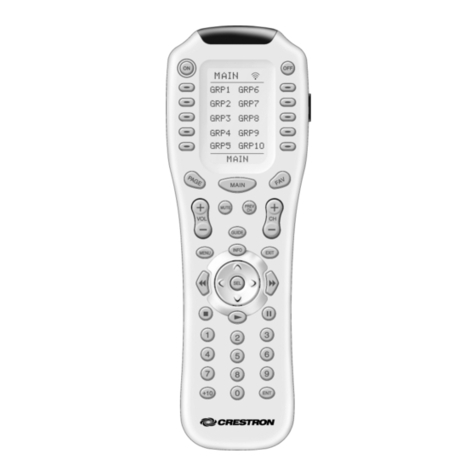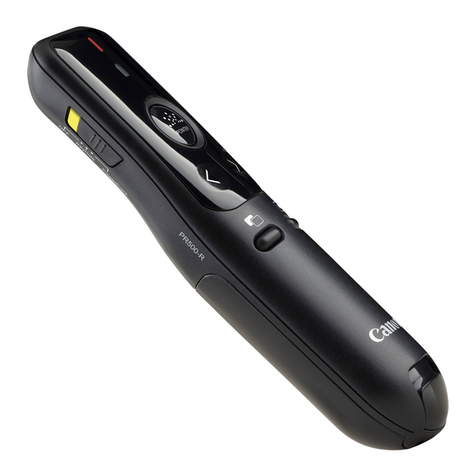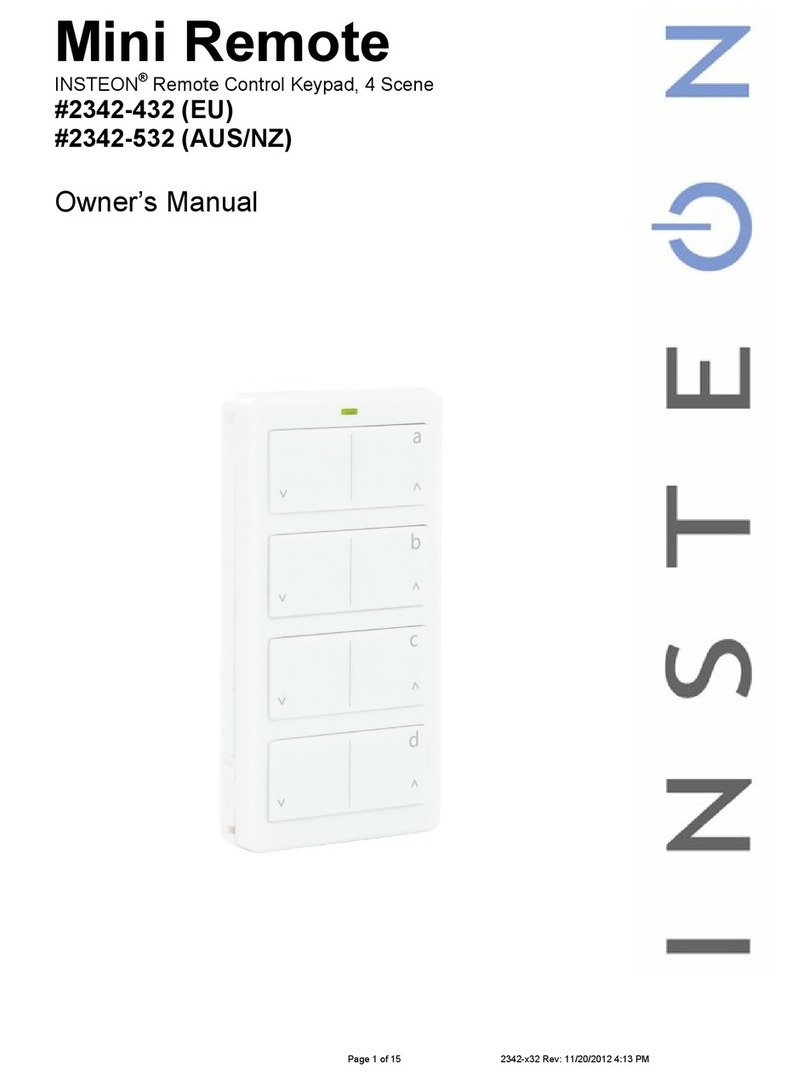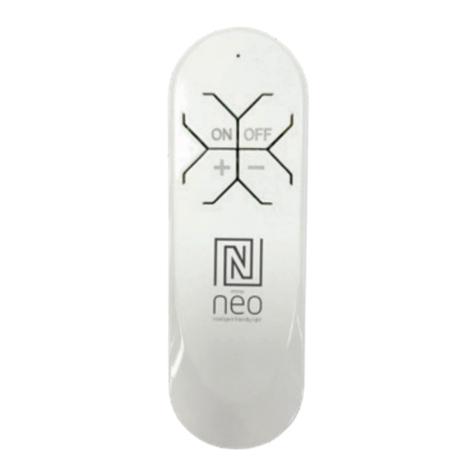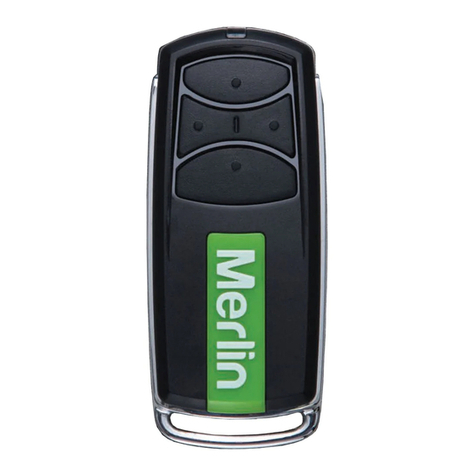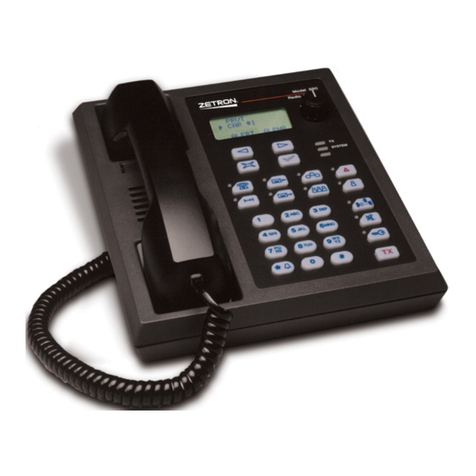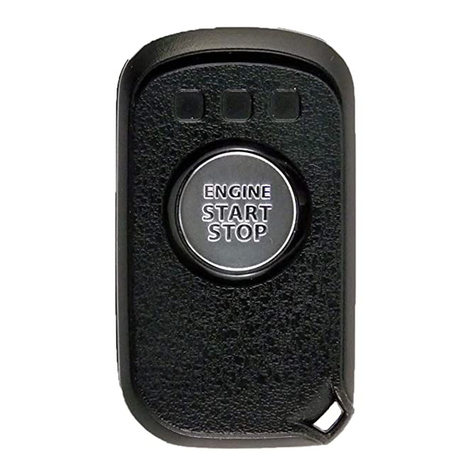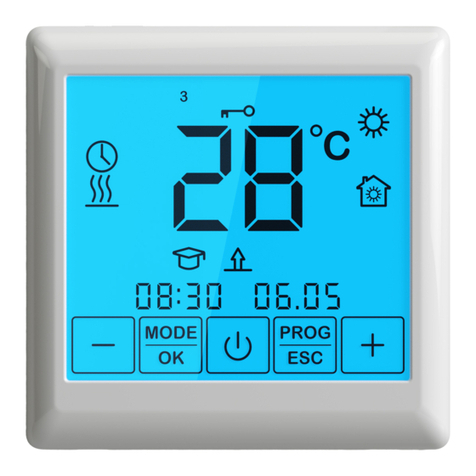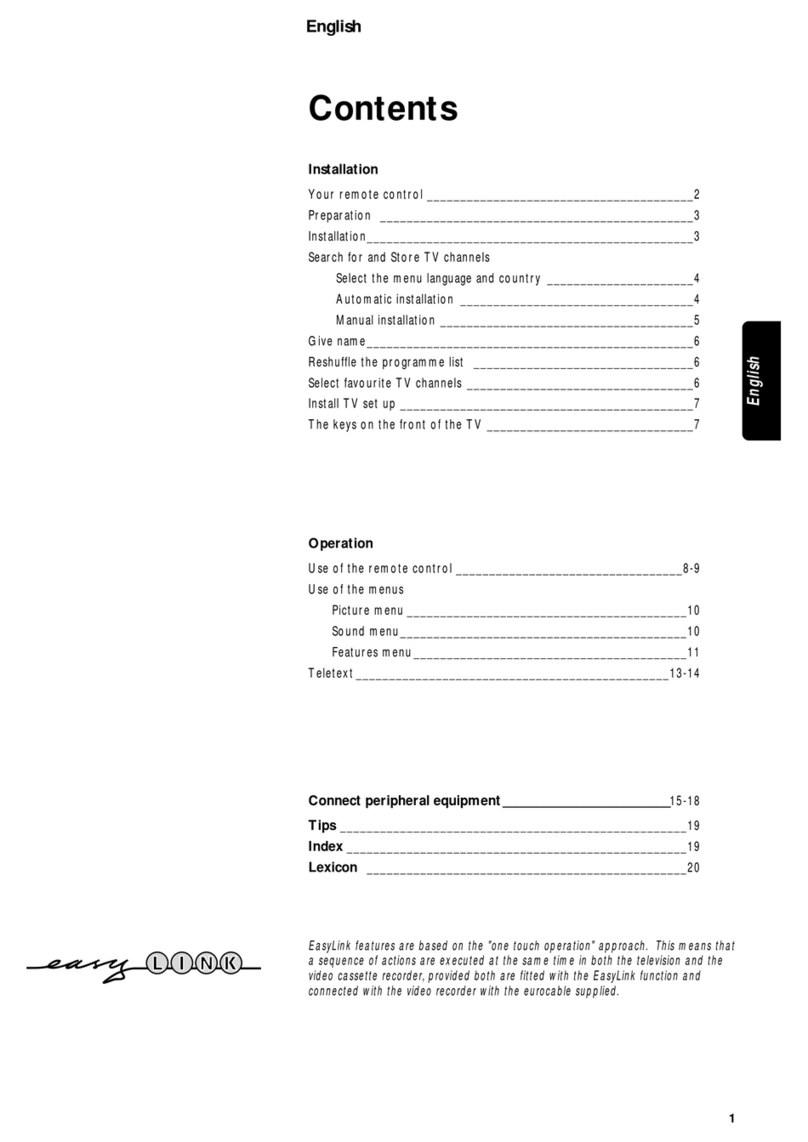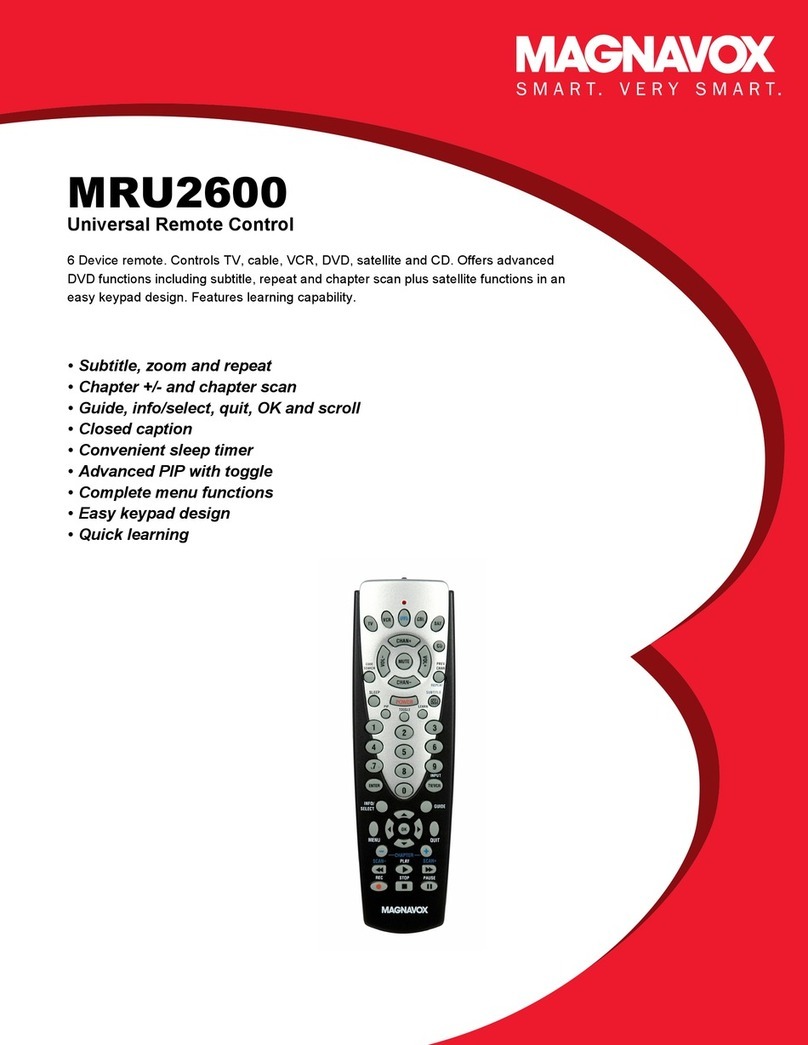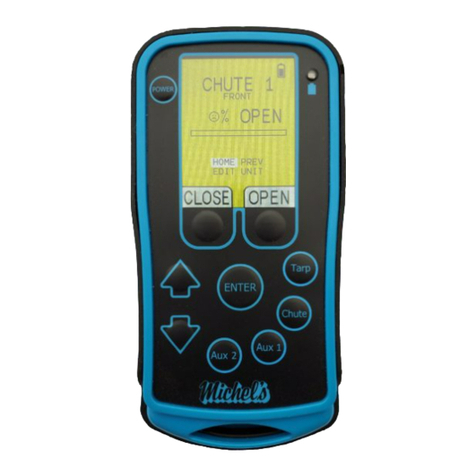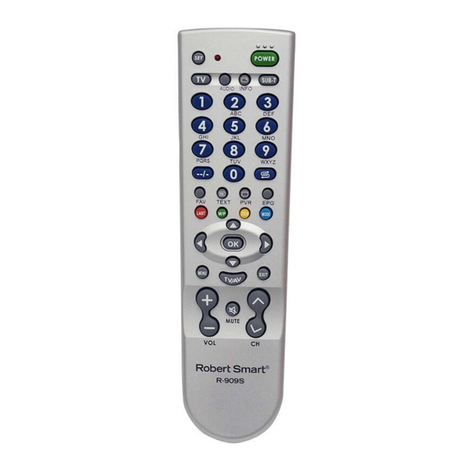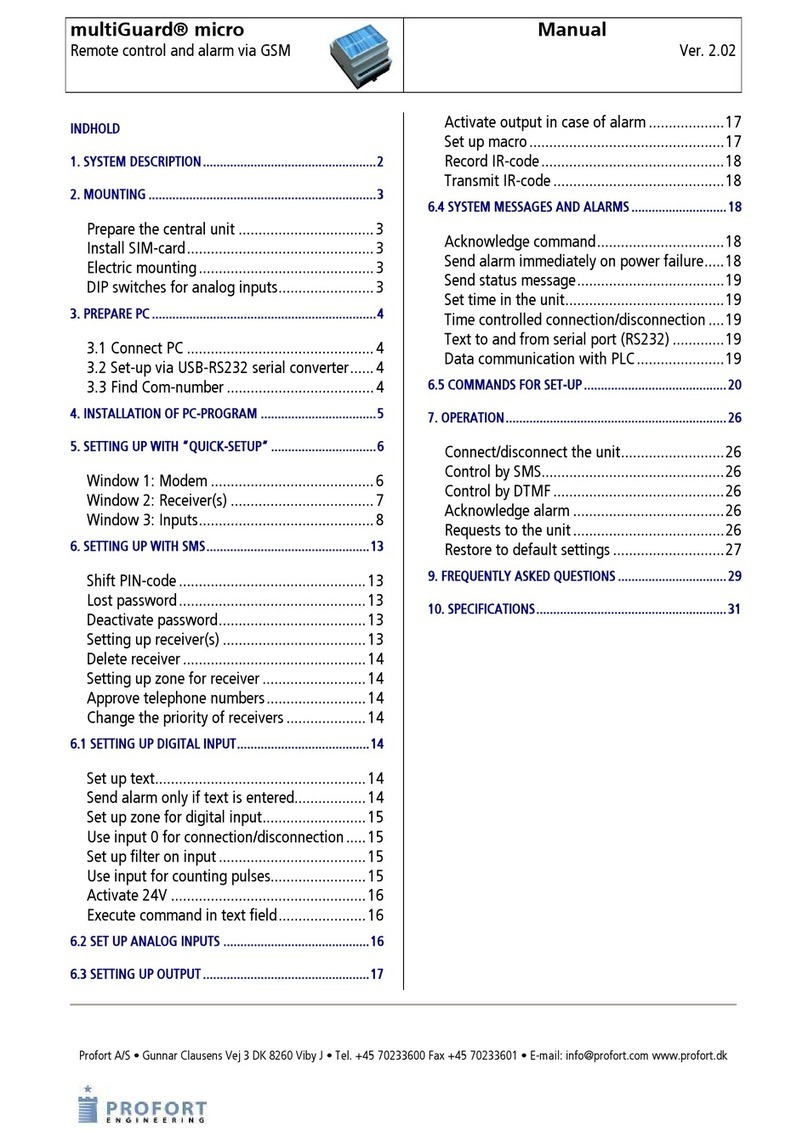Beltone Direct Series User manual

Wireless accessories
Ftil
tt
Qik
Gid
F
unc
ti
ona
l
t
es
t
‐
Q
u
i
c
k
G
u
id
e
GTO,January2011

Beltone Direct Line
Contents
Beltone Direct Line: Tests – General information 3
Beltone Direct Line: Wireless connections 5
Beltone Direct Remote Control - Pairing test 6
Beltone Direct Remote Control – Functional test 7
Beltone Direct TV Link – Pairing test 10
Beltone Direct TV Link – Streaming test 11
Beltone Direct TV Link – Alternative pairing as 2nd or 3rd channel 12
Beltone Direct Phone Link – General information 13
Blt
Di t
Ph Li k
Pii ithTRUEd i
14
B
e
lt
one
Di
rec
t
Ph
one
Li
n
k
–
P
a
i
r
i
ng w
ith
TRUE
d
ev
i
ces
14
Beltone Direct Phone Link (testing with a mobile phone) – Pairing test 15
Beltone Direct Phone Link (testing with a Bluetooth PC) – Pairing test 17
Beltone Direct Phone Link – Functional test 20
Beltone Airlink – Testing 21
FunctionalTest–QuickGuide|GlobalTechnicalOperation|Page2

Direct Line service test
Functionality test in Direct Line
These instructions are meant for a quick functional test of the Beltone Direct Line devices.
The
tests
performed
by
following
these
instructions
will
test
all
functions
of
a
Direct
Line
accessory
both
The
tests
performed
by
following
these
instructions
will
test
all
functions
of
a
Direct
Line
accessory
both
electrically and electro-mechanical. The test is meant as a quick first hand evaluation in a service situation,
whether a Direct Line device is working as intended.
These instructions should not be read as a user guide. The Direct Line device has more features than described
in this guide. Please refer to the User Guides for detailed user instructions.
How to use the guide:
The guide is step by step instructions to be followed sequentially for each Direct Line device. By showing the
instruction on a Windows PC with sound card and Bluetooth functionality, the embedded sound files might be
used
as
audio
input
for
Direct
Line
TV
and
Direct
Line
Phone
Link
tests
If
the
guide
is
used
in
a
printed
version
used
as
audio
input
for
Direct
Line
TV
and
Direct
Line
Phone
Link
tests
.
If
the
guide
is
used
in
a
printed
version
,
then sound inputs for streamer and BTB test must be applied from another sound source and TRUE sound
samples cannot be heard.
The bullet points are either marked with which indicates that this is an instruction or an information for the
operator, or with which indentifies an actual check point.
Samples of sounds played by the TRUE devices can be heard by clicking the icon
By following the instruction step by step the functions will be tested with a minimum of operator actions.
Some test are described in multiple slides.
It
the
lower
right
corner
of
each
slide
is
placed
an
arrow
indication
if
the
test
sequence
is
finished
or
continued
on
It
the
lower
right
corner
of
each
slide
is
placed
an
arrow
indication
if
the
test
sequence
is
finished
or
continued
on
next slide.
The arrows contains hyperlinks, either going back to page 2 (Contents) or to continued test instructions
on the next slide.
FunctionalTest–QuickGuide|GlobalTechnicalOperation|Page3

Direct Line service test
Test structure:
Each device test consists of two parts, a pairing procedure and a function procedure. The pairing will ensure that
the transmitter and receiver part of the device is working correctly. The functional test will ensure that the electro-
mechanical
parts
switches
plugs
and
cables
are
working
correctly
It
is
recommended
to
run
both
parts
of
the
test
mechanical
parts
,
switches
,
plugs
and
cables
are
working
correctly
.
It
is
recommended
to
run
both
parts
of
the
test
for each device, even though they are separated in the table on contents.
Test conditions:
Make sure that there is nothing in the test environment thatcanhaveainfluenceonthe RF-transmission between
the
TRUE
devices
and
the
Direct
Line
devices
Do
not
place
any
of
the
devices
on
metallic
tabletops
or
behind
or
the
TRUE
devices
and
the
Direct
Line
devices
.
Do
not
place
any
of
the
devices
on
metallic
tabletops
or
behind
or
nearby metallic structures like steel wardrobes.
Some of the tests requires a certain distance between the TRUE and Direct Line devices. To get an indication of
the transmitting power being sufficient, it is important to observe that these distances are kept, and that the space
between the devices is free of obstructions.
Re-setting a TRUE device used for testing Direct Line.
To ensure that all pairing information are cleared from an TRUE devices it is recommended to run the device
through a test sequence on a DSA 6000 Final Device Test System.
Important notice!
Please notice that pairing of TRUE hearing devices with any Beltone Direct Line device will overwrite any prior
pairing information. In a service situation it means that if a Direct Line accessory device has been tested using a
local set of TRUE hearing devices – all pairings of customers Hearing devices and accessories must be
reestablished
It
is
important
that
this
information
go
to
customers/dispensers
as
it
might
otherwise
be
interpreted
reestablished
.
It
is
important
that
this
information
go
to
customers/dispensers
,
as
it
might
otherwise
be
interpreted
as a defective device being returned.
If the customer’s TRUE devices are available for the test, the pairing test might be omitted.
FunctionalTest–QuickGuide|GlobalTechnicalOperation|Page4

Direct Line wireless connections
BeltoneTRUE™
AirlinkTM
BeltoneDirect Line
PhoneLink
BeltoneSolusPro®
fittin
g
software
BeltoneDirectLineTVLink BeltoneDirect Line
Remote Control
Mobilephone
g
Cable connection
2.4GHz wireless connection
TVAudio systemComputer
Bluetooth connection
FunctionalTest–QuickGuide|GlobalTechnicalOperation|Page5

Remote Control
–
p
art 1
(
Pairin
g)
p( g)
Equipment used in this test:
1 TRUE device programmed for Right side
1 TRUE device programmed for Left side
Optional – 1 Direct Line TV Link (SAS).
1. Put the Remote Control in pairing mode.
DO NOT
switch TRUE devices on yet
The SAS is not necessary for checking the functionality of the Remote Control. If a
SAS is used for this test it needs to be paired with the TRUE devices prior to this
test.
•
DO
NOT
switch
TRUE
devices
on
yet
.
• Remove battery cover on Remote Control
• Press the pairing button using a point instrument.
• Check that Remote Control display switch to pairing mode.
•
Pairing mode will be active for 20 seconds
Pairing button.
•
Pairing
mode
will
be
active
for
20
seconds
.
2. While Remote Control is in pairing mode
switch on both TRUE devices. Sound sample:
Delayed Activation
Searching for devices.
• TRUE devices will play the Delayed Activation sound
• When each of the devices has been detected, the TRUE devices will
play the Pairing Complete tune.
• A delay between the two paring functions can be
Sound sample:
Pairing Complete
experienced. When one side is paired the search
for the other side will continue.
• Check that Remote Control display show:
Both sides connected Left side connected.
Searching for right side Both sides connected.
FunctionalTest–QuickGuide|GlobalTechnicalOperation|Page6

Remote Control
–
p
art 2
(
Functional Test
)
1. With the devices connected, check the buttons on
Remote Control.
p( )
Remote
Control.
• If the Remote Control is in stand by mode (Display not lid), pressing any button
will bring it to active mode, but will not perform the function of the button.
• For the following tests move Remote Control approximately 150 cm away from
TRUE devices.
2. Press Program button once.
• TRUE devices will play Preset2 sound.
• Until communication between Remote Control and TRUE devices is complete,
the volume bar will be light blue
the
volume
bar
will
be
light
blue
.
• The display will show the preset name set entered into TRUE devices by the
SolusPro fitting SW.
• Check that Remote Control changes the display to Preset 2.
Right side :
finished
3. Multi function button test:
• The multi function button on the Remote Control is used for:
: turning volume up
: turning volume down
Right
side
:
finished
.
Left side: on-going.
+
Sound sample:
Pairing Complete
:
turning
volume
down
: Selecting left side TRUE device only
: Selecting right side TRUE device only
_
<
>
FunctionalTest–QuickGuide|GlobalTechnicalOperation|Page7

Remote Control – part 2 (Functional Test)
3a. Press Left button .
The Remote Control will now only adjust the Left side TRUE device.
Fig 3a.
The Right side setting will still be displayed and the device is still connected.
Check that the display has changed to Fig. 3a
3b. Press Plus button a cou
p
le o
f
times.
Right side : No adjust.
Left side: Adjusted
Fig 3b.
p
The Remote Control will turn up the volume in the Left side TRUE only.
Check that the Left side TRUE turns volume up.
The Right side TRUE should not be affected. Turn up volume in left
side TRUE.
3c. Press Right button twice.
The first press will bring back dual side control.
The second press: Remote Control will only adjust the Right side TRUE device.
Fig 3c.
The Left side setting will still be displayed and device is still connected.
Check that the display has changed to Fig 3c.
3d. Press Minus button a couple of times.
Right side : Adjusted
Left side: No adjust.
Fig 3d.
The Remote Control will turn volume down in the Right side TRUE only.
Check that the Right side TRUE volume is turned down.
The Left side TRUE should not be affected. Turn up volume in left
side TRUE.
FunctionalTest–QuickGuide|GlobalTechnicalOperation|Page8

Remote Control – part 2 (Functional Test)
4. Press Home button .
Pressing the Home button will:
Sound sample:
Preset 1
•
A
ctivate preset 1 in both hearing instruments and play preset 1 sound.
• Adjust both hearing instruments to default volume settings
• Set volume to simultaneous adjustment mode
Check that the Display changes back to default setting
Sound sample:
SAS search
5. Press Direct Line TV button
(
SAS
)
TRUE devices will play SAS search sound
TRUE device will go quiet and start search for a SAS
Check that the Remote Control dis
p
la
y
chan
g
e to Direct Line search screen. Searching for SAS
py g
If no SAS is found devices will switch back to the setting it came from.
If a SAS is found the display will show the Direct Line TV screen.
NOTE ! For TRUE devices to find the SAS they need to be paired to the SAS.
Connected
to SAS
6. Activate Ke
y
Lock switch.
Slide switch upwards to lock
Check that display shows Lock-symbol
S
li
de
do
wnw
a
r
ds
t
o
u
nl
oc
k R
e
m
o
t
e
Co
ntr
o
l
Connected
to
SAS
S de do a ds o u oc e o e Co o
End of test. Key lock activated
Key Lock switch
FunctionalTest–QuickGuide|GlobalTechnicalOperation|Page9

TV Link – part 1 (Pairing)
Equipment used in this test:
1 TRUE device programmed for Right side
1 TRUE device programmed for Left side
Headphone output on PC.
Optional
-
1 Direct Line Remote Control.
Optional
1
Direct
Line
Remote
Control.
The Remote Control is not necessary for checking the functionality of the SAS. If a Remote
Control is used for this test it needs to be paired with the TRUE devices prior to this test.
1. Pre
p
are for
p
airin
g
of TRUE devices with SAS.
ppg
•DONOTswitch the TRUE devices on yet.
• Connect the SAS to wall socket using the Power Supply.
• Check that the Green Power light switches on.
• Press the pairing button in SAS
Green light: Power on
Amber light: Pairing mode on
Small amber light: Channel 1
• Check that the amber Activity light is switched on.
• Check that the amber light for Channel 1 switches on.
• Pairing mode will be active for 20 seconds.
2
Whil th SAS i i i i d it h b th TRUE
Sound sample:
Delayed Activation
2
.
Whil
e
th
e
SAS
i
s
i
n pa
i
r
i
n
g
mo
d
e, sw
it
c
h
on
b
o
th
TRUE
devices.
• The TRUE devices will play the Delayed Activation sound.
• Check that all three channel indicators switch on for a short period.
Cf f
C
Sound sample:
Pairing Complete
•
C
heck that each o
f
the TRUE devices are
f
ound indicated by Pairing
C
omplete
tune played by each TRUE device..
• Channel 1 light will flash for the reminder of the pairing mode period.
FunctionalTest–QuickGuide|GlobalTechnicalOperation|Page10

TV Link – part 1 (Streaming)
1. Prepare for TV connection PC .
• Connect the red and white plug on SAS to the
headphone output on the PC. Use the Jack adaptor.
• Switch the TRUE devices to the streaming (SAS) program by pressing
the push button on each TRUE devices for three seconds
the
push
button
on
each
TRUE
devices
for
three
seconds
.
• As an alternative, press the SAS button on Remote Control
• Each TRUE device will play the SAS connection sound
2. Streaming music from PC.
•
Click one of the icons in the Sound file library to play a music file in your
Audio Left Audio Right
Mono/Stereo Power Paring
Sound files library
Click
one
of
the
icons
in
the
Sound
file
library
to
play
a
music
file
in
your
preferred music genre through the streamer.
• Move the TRUE devices approximately 7 meters away from SAS.
• Check the music is heard in the TRUE devices.
3. Check SAS Mono / Stereo switch.
Classic
Pop
• Remove Left side audio cable.
• Check that music disappears from the left side TRUE
• Slide Mono / Stereo switch left
• Check that music returns to Left side TRUE (now in mono)
Slid th it h t th i ht d t th di bl
Rock
•
Slid
e
th
e sw
it
c
h
t
o
th
e r
i
g
ht
an
d
reconnec
t
th
e au
di
o ca
bl
e.
4. Check SAS volume control.
• Press the SAS volume control Left side (-).
• Check the volume of music in TRUE decreases.
• Press the SAS volume control Right side (+).
• Check the volume of music in TRUE increases. Mono < > Stereo
End of test.
FunctionalTest–QuickGuide|GlobalTechnicalOperation|Page11

TV Link
part 1 (
Pairing
)
TV
Link
–
part
1
(
Pairing
)
Alternative pairing for 2
nd
or 3
rd
Direct Line TV Link
Alternative
pairing
for
2
nd
or
3
rd
Direct
Line
TV
Link
.
It is possible to pair up to three Beltone Direct Line TV Links with a given pair
of TRUE devices. For testing pairing function for a second TV Link follow
instructions for channel 1 (default), but press the pairing button on SAS twice
(three times for third Direct Line TV)
(three
times
for
third
Direct
Line
TV)
.
Pairing as second Direct Line TV will be indicated by Channel 2
light switches on.
Channel 2 indicator
End of test.
FunctionalTest–QuickGuide|GlobalTechnicalOperation|Page12

Phone Link – General information
Direct Line Phone Link (BTB):
• The BTB (BlueToothBridge) is a “bridge” between the
Bluetooth “world” and the Direct LineTM wireless 2.4 GHz “world”.
• BTB must be paired in both these directions meaning:
• Pairing with TRUE devices
• Pairing with the Bluetooth device providing input to BTB.
• Two different procedures for pairing BTB with Bluetooth device are described in this document.
Using a mobile phone as Bluetooth device
•
Using
a
mobile
phone
as
Bluetooth
device
• If a mobile phone is not available, use the PC as Bluetooth device.
Only one of these needs to be performed to ensure correct functionality of the BTB.
If the Bluetooth PC procedure is used, the ”Own voice microphone inlet” will not be tested.
• In both procedures the Bluetooth device, (PC or mobile phone) will be the ”Searching” device, and the BTB will be the
!
”Found” device.
• BTB has an internal rechargeable battery.
A functionality test of the BTB will consist of:
• Testing the charger and the charging ability of the BTB.
• Pairing BTB with one or two TRUE devices.
• Pairing BTB with either a mobile phone or a Bluetooth PC
• If the PC running this presentation is equipped with a Blootooth module it can be used for this pairing.
•-
or alternatively use a Bluetooth mobile phone
or
alternatively
use
a
Bluetooth
mobile
phone
.
• Playing one or more of the sound file embedded in this presentation
• - or alternatively place a call to the mobile phone
FunctionalTest–QuickGuide|GlobalTechnicalOperation|Page13

Phone Link – Pairing with TRUE
Equipment used in this test:
1 Direct LineTM charger
1 or 2 TRUE devices.
1. Checking Charger and charging.
• Before any tests is performed, make sure the BTB is charged
• Connect the charger to the mini-USB socket on the BTB.
• Check that the LED turns red (or green if BTB is fully charged).
2. Prepare for pairing of TRUE devices with BTB.
• Applicable for both Bluetooth pairing procedures.
DO NOT switch TRUE devices on yet.
R th t lli t th b tt f th BTB
LED indicator
!
•
R
emove
th
e me
t
a
lli
c cover a
t
th
e
b
o
tt
om o
f
th
e
BTB
• Switch the BTB on by pressing the multifunction key for approx. 1 sec.
• Check that the blue LED turns on and stays on for approx. 4 sec.
3. Pairing of TRUE devices with BTB.
Pairing bottom
3.
Pairing
of
TRUE
devices
with
BTB.
• Press the pairing bottom on the BTB
• Check the blue LED turns on solid
• The BTB will stay in pairing mode for 20 sec.
• Close the battery doors on the TRUE devices Sound sample:
• The TRUE devices will play the Delayed Activation sound.
• Check that each of the TRUE devices are found indicated by Pairing Complete
tune played by each TRUE device
Delayed
A
ctivation
Sound sample:
Pairing Complete
FunctionalTest–QuickGuide|GlobalTechnicalOperation|Page14

Phone Link – Mobile phone paring
1. Prepare for pairing of BTB with mobile phone.
• The Mobile phone will be the ”Searching” device and the BTB will be the ”Found” device”
• The pairing procedure is controlled by the mobile phone.
• Procedure may vary depending on the mobile phone used, but the steps and sequence will
be very similar.
• Refer to the manual for the mobile
p
hone.
p
In the following example a Blackberry 8900 phone is used .
• Make sure the BTB is turned OFF
• Make sure the mobile phone is turned ON.
• Press and hold the multifunction button (on the BTB) for 7 seconds.
Ch k th t th bl LED t
•
Ch
ec
k
th
a
t
th
e
bl
ue
LED
t
urns on.
• The LED on the BTB can help indicate when the BTB is in Pairing mode.
• After approx. 3 seconds it will turn on solid blue.
• After 4 seconds it will turn off for a period of approx. 2 seconds.
When LED turns on again BTB will be Pairing mode for 2 minutes
•
When
LED
turns
on
again
BTB
will
be
Pairing
mode
for
2
minutes
• Put the mobile phone in Bluetooth pairing mode (search mode)
FunctionalTest–QuickGuide|GlobalTechnicalOperation|Page15

Phone Link – Mobile phone pairing
4. Pairing of BTB with mobile phone.
• Follow the 5 steps below :
1. Select Search mode on the phone.
2. Wait until the search is finalized. The Phone will find all available
Bluetooth devices within the range of the phone.
3. In the found devices select ”Hearing Aid Phone” which is the Bluetooth
device name for BTB.
4. Enter passkey 0000 (four zero’s)
5. Pairing complete, connect to BTB – ready for use. Step 1
Step 2 Step 3 Step 4 Step 5
Continue on slide ” Direct Line Phone Clip – BTB function “ (Slide20)
FunctionalTest–QuickGuide|GlobalTechnicalOperation|Page16

Phone Link – Bluetooth PC pairing
Equipment used in this test:
PC ( running this presentation) with Bluetooth functionality, Windows XP and Service Pack 3. English version.
Other country local settings might influence the Bluetooth Setup.
(- alternatively install a Jabra A320s Bluetooth USB adaptor)
Start Windows Bluetooth Setup Wizard.
• Make sure the BTB is turned OFF.
• In the PC menu select
• Click on
• In the Bluetooth Tasks menu select :
”Add a Bluetooth Device”. This will start the
Bluetooth Setup Wizard.
•
Before continuing make sure to put BTB into Discoverable
Before
continuing
make
sure
to
put
BTB
into
Discoverable
mode.
Put BTB in Discoverable mode.
Press and hold the Multifunction button
•
Press
and
hold
the
Multifunction
button
. for 7 seconds.
• The LED on the BTB can help indicate when the BTB
is in Discoverable mode.
• After approx. 3 seconds it will turn on solid blue.
• After 4 seconds it will turn off for a period of approx. 2
seconds.
• When LED turn on again BTB will be Discoverable
mode for 2 minutes.
FunctionalTest–QuickGuide|GlobalTechnicalOperation|Page17

Phone Link – Bluetooth PC pairing
• The Wizard will search for all Bluetooth devices within range.
• All found devices will be listed in the Selection window.
• If needed you can limit the number of found devices by
selecting
”
Show audio devices
”
selecting
Show
audio
devices
.
• Enter Passkey: 0000 if prompted (only at the first BTB
paring)
• Select the device “Hearing Aid Phone” which is the Bluetooth
device name for BTB.
•
Click
[ Next >]
•
Click
[
Next
>]
• The Wizard will list the services available for the selected
device.
• For this test you only need the ”Stereo Audio” service.
• Use the service in default settings – do not use [ Configure ]
btt
b
u
tt
on.
• Click [ Next >]
FunctionalTest–QuickGuide|GlobalTechnicalOperation|Page18

Phone Link – Bluetooth PC pairing
• The Wizard has placed a shortcut to Hearing Aid Phone
(BTB) in My Bluetooth Places on PC.
•
This shortcut can be used for future parings with other
This
shortcut
can
be
used
for
future
parings
with
other
BTB’s to be tested.
• Click [ OK ]
• The Wizard is now ready to make the final connection
to the BTB
to
the
BTB
.
• Click [ Finish ]
• The Wizard will show the receipt window (shown below
this text), and the pairing and connection is complete.
BTB i d f i
•
BTB
i
s now rea
d
y
f
or test
i
ng
FunctionalTest–QuickGuide|GlobalTechnicalOperation|Page19

Phone Link – BTB functional Test
1. BTB paired with Bluetooth PC.
• Make sure BTB is connected to Bluetooth PC.
• Switch the TRUE devices on.
Th TRUE d i ill l th
D l d A ti ti
d
Sound files library
Classic
•
Th
e
TRUE
d
ev
i
ces w
ill
p
l
ay
th
e
D
e
l
aye
d
A
c
ti
va
ti
on soun
d
• Play one of the music files from the Sound files library.
• Check that the TRUE devices switches to BTB mode and starts playing the music.
• When the music stops, the TRUE devices will switch back to normal HI mode.
Pop
Rock
2. BTB paired with a mobile phone.
• Make sure BTB is connected to the mobile phone.
• Switch the TRUE devices on.
• The TRUE devices will play the Delayed Activation sound
Pl ll t th bil h f th h ( h 2)
Sound sample:
Delayed Activation
•
Pl
ace a ca
ll
t
o
th
e mo
bil
e p
h
one
f
orm ano
th
er p
h
one
(
p
h
one
2)
.
• Check that the TRUE devices play the BTB phone ringing sound
• Check that sound is transmitted from phone2 to the TRUE devices
• Talk into the ”Own voice microphone inlet”.
• Check that the sound is transmitted to the
p
hone 2
Sound sample:
BTB phone ringing
p
3. Test the BTB volume control.
• Press the Volume control button +.
• Check that volume increases.
•
Press the volume control
•
Press
the
volume
control
–
• Check that volume decreases.
• Press the Multifunction button.
• Check that the call has ended.
”Own voice”
microphone inlet
FunctionalTest–QuickGuide|GlobalTechnicalOperation|Page20
